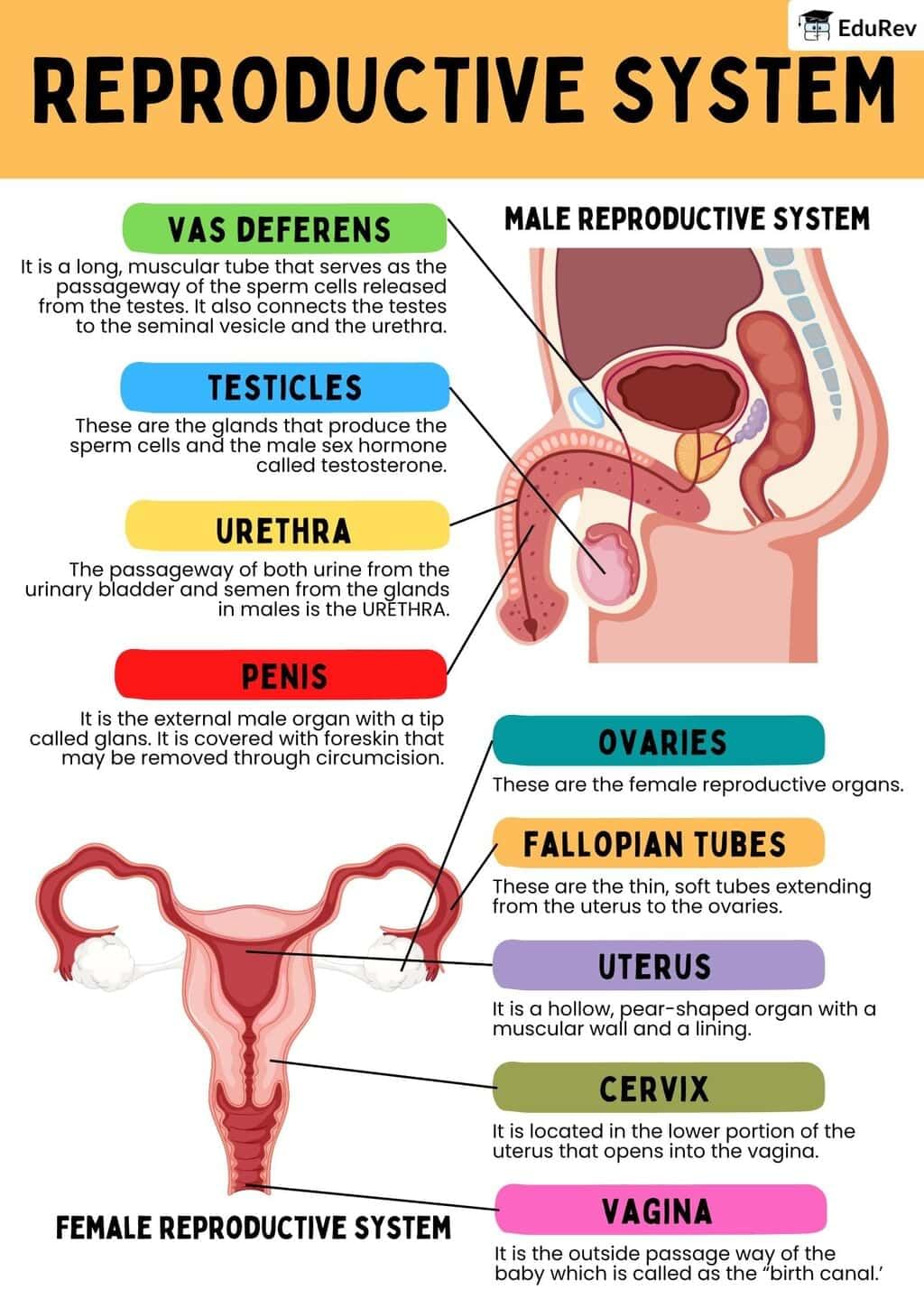NEET Exam > NEET Notes > Biology Class 12 > Infographics: Reproductive Systems
Infographics: Reproductive Systems | Biology Class 12 - NEET PDF Download

The document Infographics: Reproductive Systems | Biology Class 12 - NEET is a part of the NEET Course Biology Class 12.
All you need of NEET at this link: NEET
|
59 videos|290 docs|168 tests
|
FAQs on Infographics: Reproductive Systems - Biology Class 12 - NEET
| 1. What are the primary components of the male and female reproductive systems? |  |
Ans. The male reproductive system primarily consists of the testes, which produce sperm and hormones, the epididymis, vas deferens, seminal vesicles, prostate gland, and the penis. The female reproductive system includes the ovaries, which produce eggs and hormones, the fallopian tubes, uterus, cervix, and vagina. Each component plays a crucial role in reproduction and hormonal regulation.
| 2. How do the male and female reproductive systems differ in terms of hormone production? |  |
Ans. In the male reproductive system, testosterone is the primary hormone produced by the testes, which regulates sperm production and secondary sexual characteristics. In contrast, the female reproductive system produces estrogen and progesterone in the ovaries, which are essential for regulating the menstrual cycle, ovulation, and pregnancy.
| 3. What is the process of fertilization, and how does it occur in the reproductive systems? |  |
Ans. Fertilization occurs when a sperm cell from the male penetrates an egg cell from the female. This usually takes place in the fallopian tubes after ovulation. Once a sperm successfully fertilizes the egg, it forms a zygote, which then travels to the uterus for implantation and further development.
| 4. What are common reproductive health issues affecting both male and female reproductive systems? |  |
Ans. Common reproductive health issues include infertility, which can result from hormonal imbalances, structural abnormalities, or environmental factors; sexually transmitted infections (STIs), which can affect reproductive health; and conditions such as polycystic ovary syndrome (PCOS) in females and erectile dysfunction in males. Regular health check-ups can help manage these issues effectively.
| 5. How does the menstrual cycle function in the female reproductive system? |  |
Ans. The menstrual cycle is a monthly process regulated by hormones that prepare the female body for potential pregnancy. It typically lasts about 28 days and consists of four phases: the menstrual phase (shedding of the uterine lining), the follicular phase (development of eggs in the ovaries), ovulation (release of an egg), and the luteal phase (preparation of the uterus for potential implantation). If fertilization does not occur, the cycle repeats with menstruation.
Related Searches
















